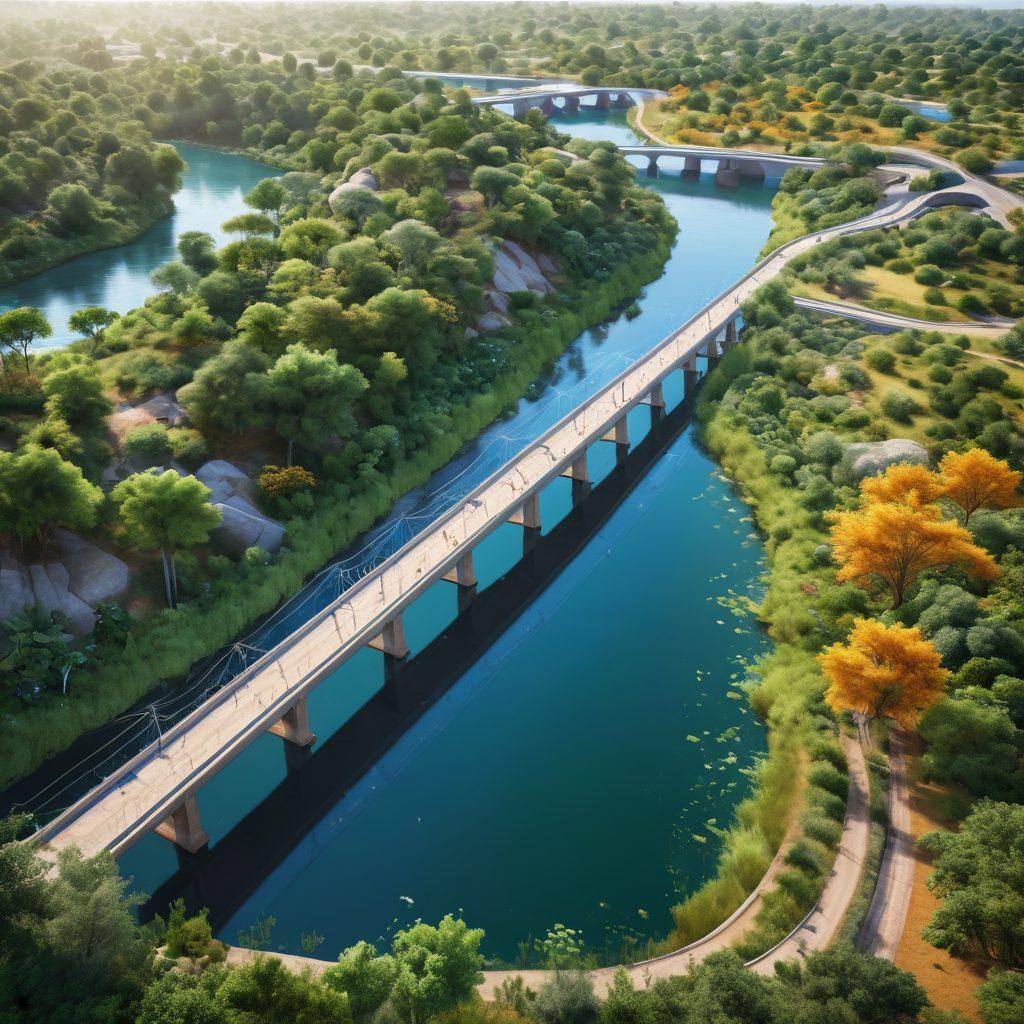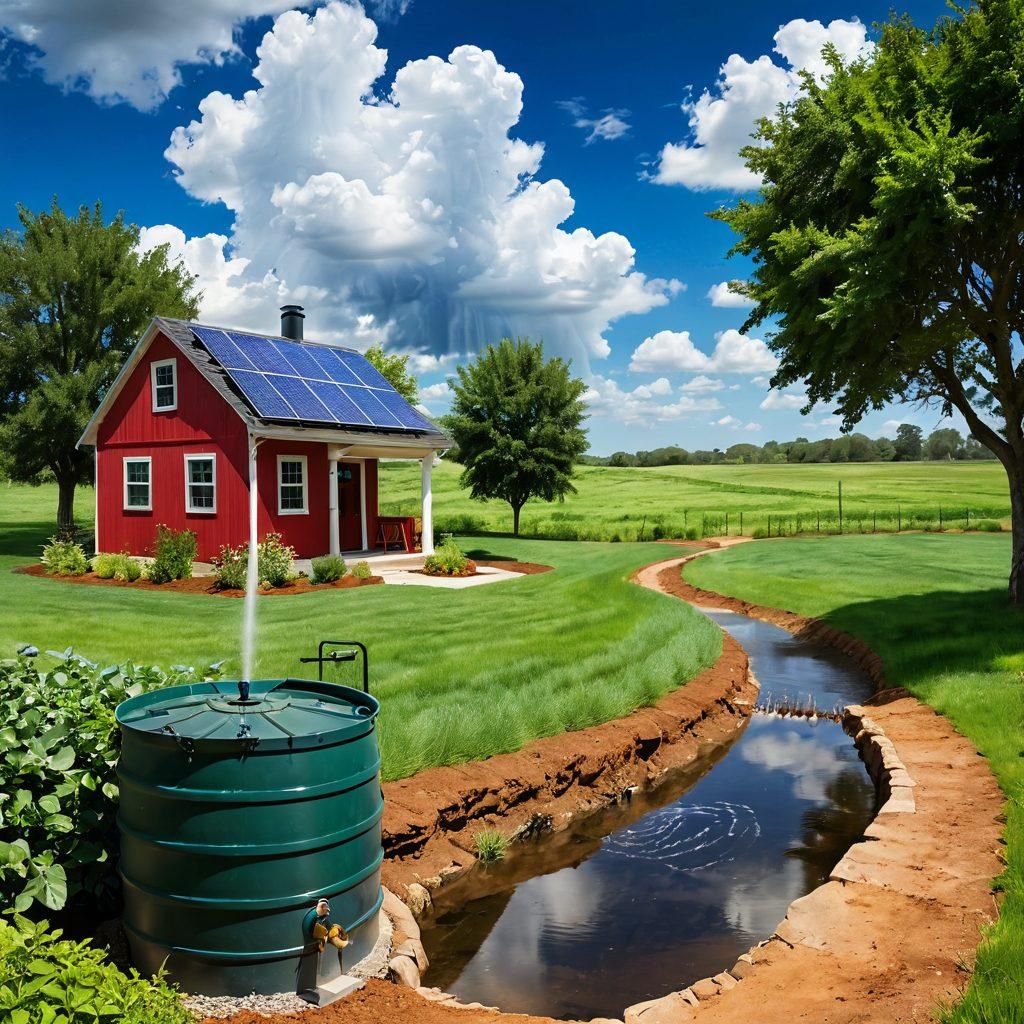Navigating New Mexico's Water Future: Sustainable Practices for a Thriving Ecosystem
In the sun-soaked deserts of New Mexico, water's scarcity is a challenge that echoes through every corner of the state. As the climate continues to shift, it's imperative that we reflect on our relationship with this vital resource. How can we harness wisdom from our ancestors and nature itself to protect our increasingly fragile water supply? To ensure a sustainable future for all New Mexicans, we need innovative strategies that address water usage, management, and environmental conservation. This is the essence of water stewardship—a commitment to managing our natural resources responsibly while fostering a sense of community engagement and connection to the land.
Consider the ancient Pueblo tribes who mastered the art of irrigation management, utilizing the region's natural hydrology to cultivate crops even in arid conditions. Their age-old practices hold the key to modern challenges, leading us to the concept of rainwater harvesting. By capturing and utilizing rainwater, we can supplement our water supply, reduce reliance on public water systems, and tackle the impacts of climate change on water availability. Responsible rainwater harvesting is not merely a trend; it's a necessary component of a comprehensive water sustainability strategy that enhances our resilience against future droughts.
Moreover, when we discuss innovative strategies for New Mexico's water supply, we cannot overlook the importance of clean water initiatives and groundwater management. The connection between surface water and groundwater is vital for maintaining ecological balance. Investing in eco-friendly practices not only ensures drinking water safety but also supports aquatic ecology, fostering habitats that bolster biodiversity. This holistic approach to water resource education encourages communities to understand how their actions influence both the quantity and quality of water available.
As we delve deeper into this subject, we must ask ourselves: Are our water-related policies effectively addressing the challenges we face? Engaging with local government—advocating for policies that promote sound water infrastructure, enhance water management, and protect our natural ecosystems—is crucial. Community engagement is a powerful tool, as residents can rally for stronger regulations on water usage and advocate for better irrigation management practices. By coming together, we are more than just spectators; we become active stewards of our water future.
In conclusion, the future of New Mexico's water lies in our hands. By embracing innovative strategies such as rainwater harvesting, eco-friendly practices, and robust community engagement, we can create a thriving ecosystem for generations to come. Let's swap stories about our relationship with water and learn from one another—the wisdom of the past informs our present, paving the way for a sustainable tomorrow. In the words of the great environmentalist Sylvia Earle, "The planet is alive—and we are part of it.” Let's ensure that this life-giving resource continues to flow freely for all.
Building Resilient Water Infrastructure: Enhancing Ecosystem Health Through Community Engagement
Water is life. In New Mexico, a state blessed with breathtaking landscapes yet challenged by the reality of water scarcity, the future hinges on how we manage this precious resource. As we delve into the nuances of building resilient water infrastructure, it becomes clear that community engagement is an essential ingredient in achieving sustainable practices. By understanding the interplay between water supply, aquatic ecology, and the various facets of hydrology, we embark on a collective journey towards water sustainability.
Imagine a community where every drop of water is valued, where clean water initiatives thrive alongside eco-friendly practices. In New Mexico, community engagement becomes the heartbeat of innovative water stewardship. Local residents become champions of their water resources; whether it’s through advocating for rainwater harvesting systems or participating in surface water management projects, their voices guide effective water-related policies. This engagement fosters a sense of ownership that can revolutionize how we think about drinking water safety and irrigation management.
Let's face it, the impact of climate change on water resources is no longer a distant threat; it’s our present reality. As we witness shifts in rainfall patterns and rising temperatures, our communities must take action to protect our vital natural resources. Building resilient water infrastructure requires adapting to these changes. Involvement from community members helps to establish pragmatic solutions tailored to local needs. Have you ever thought what role you can play in preserving your local watershed?
As we explore the interconnectedness of water infrastructure with both human activities and ecological health, the story unfolds that we must listen to the concerns of every stakeholder. Collaboration between public water systems, environmental conservation groups, and ordinary citizens is crucial. The knowledge gained through water resource education empowers communities to advocate for water ethics, ensuring that our ecosystems—both aquatic and terrestrial—can thrive in harmony with water usage. Who knew that understanding the basics of groundwater management could lead to bold innovations in urban planning?
Ultimately, building resilient water infrastructure is not just about pipes and treatment facilities; it’s about fostering relationships and nurturing a culture of water stewardship across New Mexico. As we plan for the future, let us carry the mantra that every act matters—whether it’s small-scale initiatives for rainwater harvesting or broader community drives for sustainable water practices. Together, we can create a legacy of clean water, rich ecosystems, and empowered communities, turning our challenges into triumphs. So, what steps can you take today to contribute to a water-solvent future in your own community?
From Rainwater Harvesting to Groundwater Management: A Comprehensive Approach to Water Stewardship
In the arid lands of New Mexico, the vast blue skies often mock the scarcity of water that runs beneath the surface. Yet, these challenges present a unique opportunity for innovative water stewardship. As we find ourselves grappling with climate change and its impact on water resources, sustainable practices such as rainwater harvesting and effective groundwater management are becoming not just options, but necessities. Imagine transforming a drought-prone environment into a thriving ecosystem by harnessing the very water that slips through our fingers. Can we build a future in New Mexico where our water supply remains both clean and abundant?
Water sustainability doesn't just happen by chance; it requires a concerted effort from local communities, policymakers, and individuals alike. Public water systems are the lifeblood of any ecosystem, and nurturing them through smart water-related policies can enhance the resilience of our water infrastructure. This collective action is anchored in the principles of environmental conservation and eco-friendly practices, ensuring that every drop counts. When we consider our water ethics, we must ask ourselves: How much are we willing to invest in being responsible stewards of our natural resources?
The concept of rainwater harvesting is not limited to just roofs and gutters; it's a philosophy rooted in respect for our environment. Capturing and utilizing rainwater not only alleviates the pressure on our drinking water safety but also contributes to the overall hydrology of the region. As we engage with our communities to promote these initiatives, imagine hosting workshops that teach families how to implement their own rainwater systems. How might this shift our perspective on water usage?
Groundwater management also plays a critical role in New Mexico’s water future. With an intricate network of underground aquifers, understanding the relationship between surface water movement and groundwater replenishment is essential for maintaining aquatic ecology. Innovative techniques in irrigation management can vastly improve water efficiency, particularly in agriculture, where water often becomes a contested resource. The challenge lies in educating ourselves and our neighbors on these practices—can we become champions for water resource education in our communities?
As we consider these pathways forward, the questions become both personal and communal. Each resident of New Mexico has a stake in our water future, and by embracing sustainable practices, we can ensure our ecosystems thrive for generations to come. Engaging in community discussions about water stewardship can unveil a wealth of ideas, from basic conservation techniques to advanced groundwater recharge practices. Are we ready to take action and shape a resilient water future for New Mexico?


